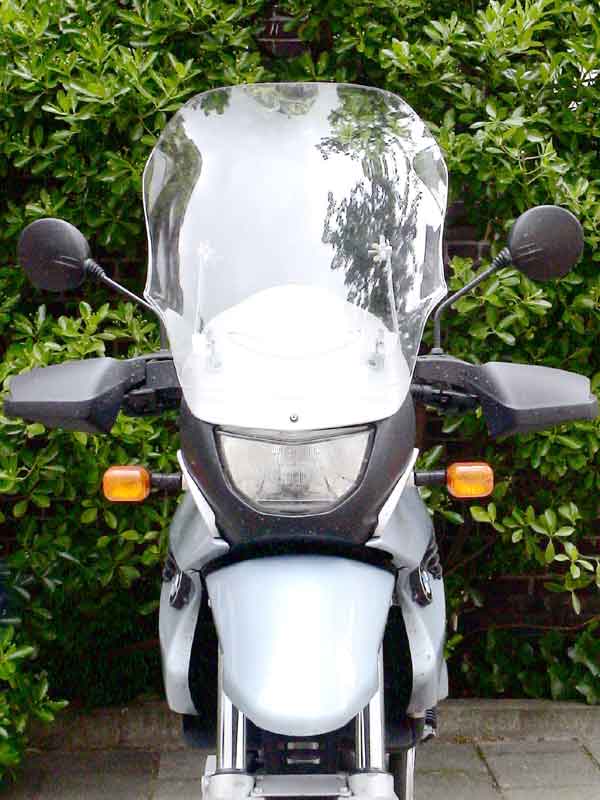
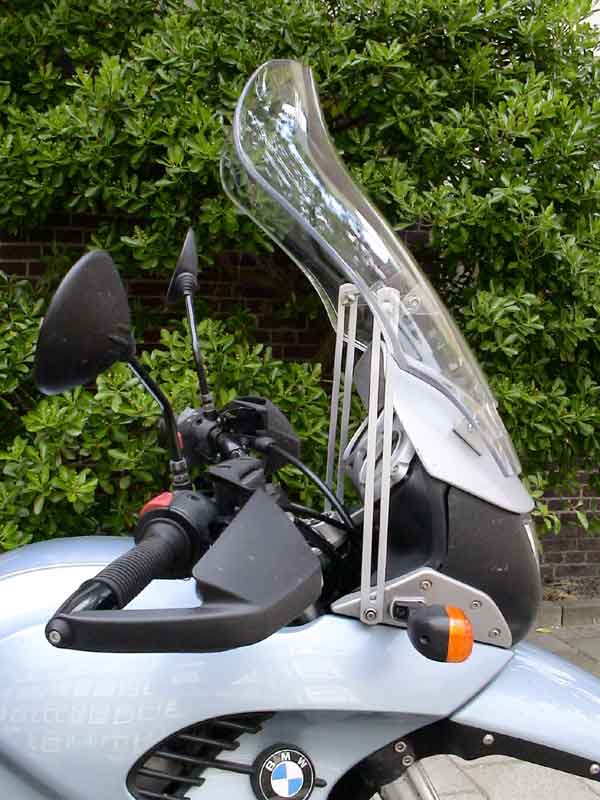
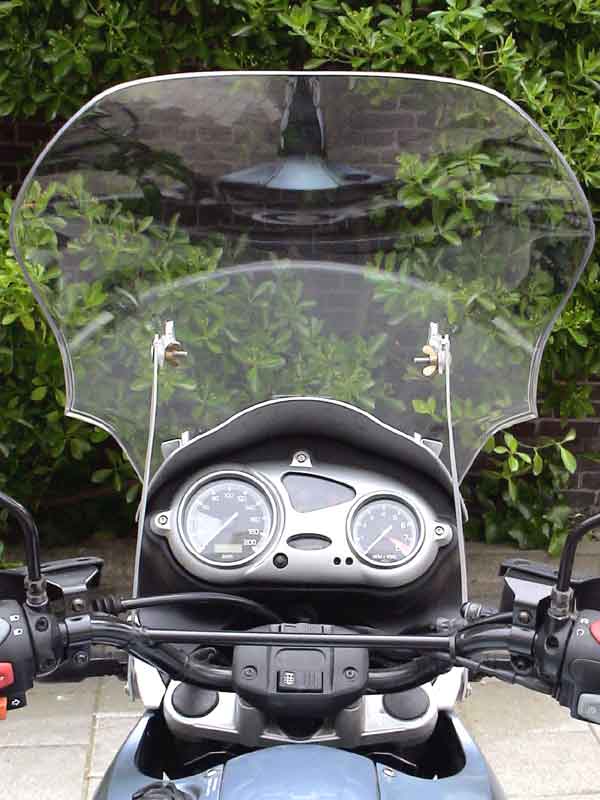
BikeTech Page 6
The ULTIMATE 650GS screen has
arrived!!!
|
Although quite satisfied with my modified GS tall screen (see my earlier biketech pages and my page on the Chain Gang site, also referred to as "Pazzo's adjustable screen" , some part of my mind continued to search for a solution that would allow me to drive well over 80 mph without visor or earplugs, and allow me to raise or lower the screen as required depending on on/off-road conditions. The solution should also be cosmetically acceptable and affordable. After my implementation, early summer 2002, of the modified screen I therefore kept checking out aftermarket screens as well as the original screens of basically any bike that crossed my path. Now, almost two years later, I can confirm that the Ultimate 650GS screen solution exists! The ultimate screen is even a better fit than I thought: The answer to all problems is solved by the purchase of the tall screen of big BMW brother K1200GT. |
 |
 |
 |
|
Price and size Design Comparison with other screens |
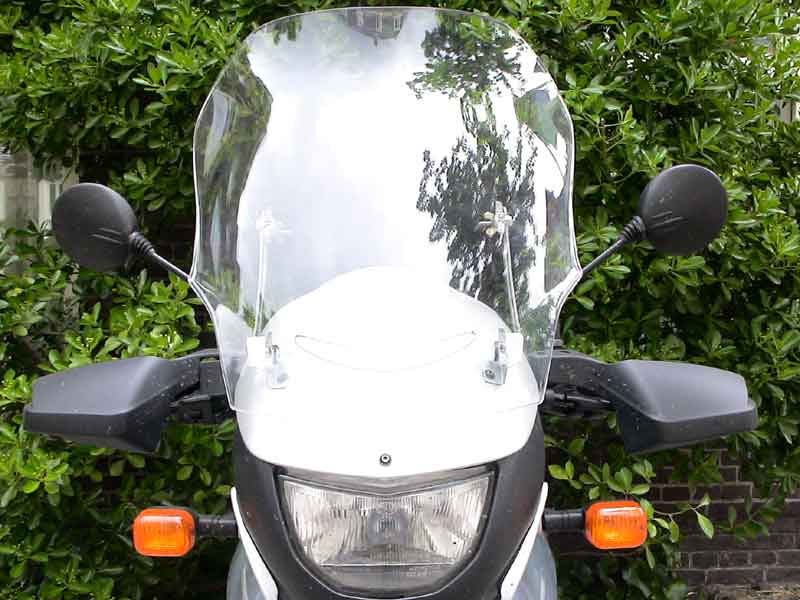 |
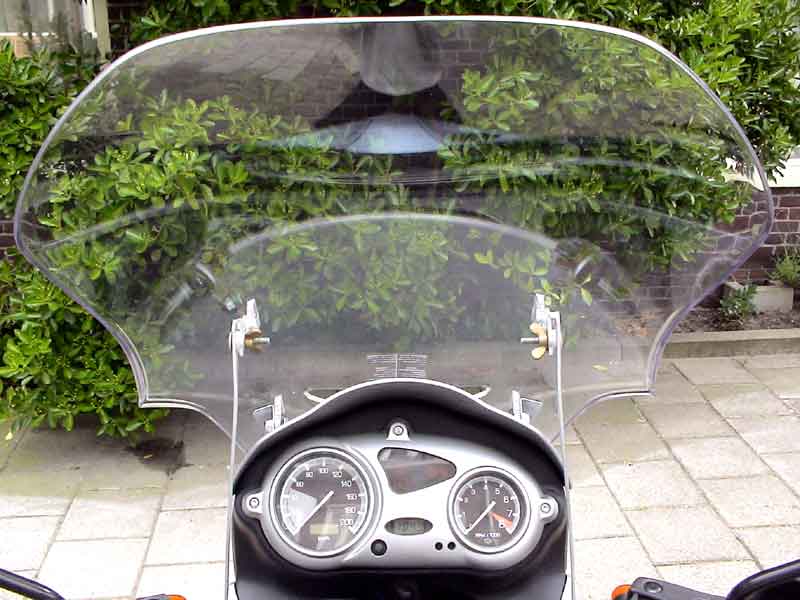 |
|
On the K1200GT, the screen is connected via four cast mounting handles to levers that allow the screen to be either manually (K1200GT 2001/2002) or electrically (2003/2004) lowered and raised about 4" to make touring more comfortable. These four handles form part of the polycarbonate cast and offer a perfect match for the connection to the 650GS (series up to 2003). The two lower handles are just far enough apart to allow them to be attached to the upper screws of the standard 650GS deflector via two "Z" shaped thin steel mounting plates, while the two higher handles almost perfectly fit the metal bars that I've already used for my earlier tall screen modification. Material costs for the construction should be under $20. I started with a prototype that took an hour or two to build. After driving several hundred miles with the prototype I created the final version that is described below. With the drawings below you should be able to build this solution in a few hours (excluding paint work). Driving test and Conclusion
Needless to say this has significantly increased my pleasure of riding the 650GS, allowing me to hop on without bothering about ear protection and having comfortable long drives even in light rain, as nearly all wind and rain is deflected by the screen. One remark, based on experience: The curved top deflector was created to deflect wind only. Mosquitos at 100 mph will not be much deflected, so eyeglasses are advised when you plan to drive with an open visor at these higher speeds. Good luck and many enjoyable
driving hours at 100+mph! 2004©AntarticaGalleries |